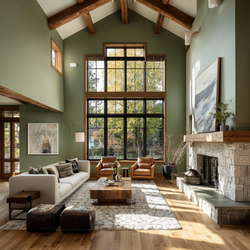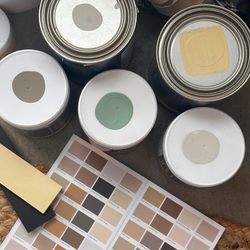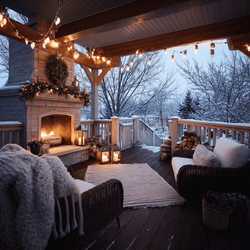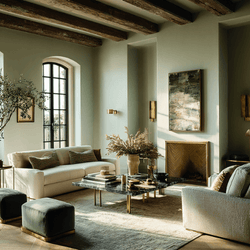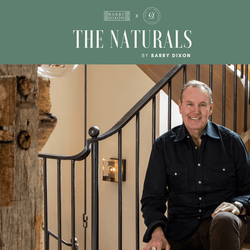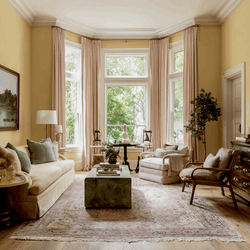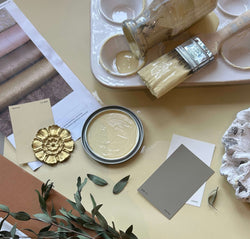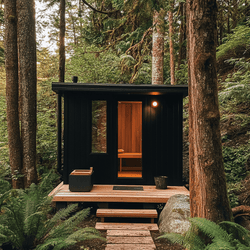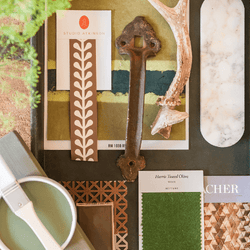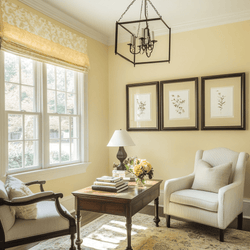A Fresh Focus on Grey 2020
A New Day for Grey

As a colour specialist who’s absolutely obsessed by colour, the challenge is not always to simply create the right colour palettes, but in creating a grouping that combines texture, pattern and a personality to add depth and dimension to a space.
Grey is the colour that is connected with maturation and obligation, a fondness for grey apparently represents intellect, self-restraint, balance and a safe environment. Looking ahead at colour trends and the fresh, more colourful 2020 direction, grey is taking something of a back seat as a companion colour. A more reserved place, where it integrates less dominantly into the design forum.
We all know how tricky relationships can be -- finding the balance of every element and detail is like building a house of cards. But, fortunately, design revolves around visual tension and the connection between colours and objects.
As we consider greys, we need to reapproach and refocus to dig a little deeper into how to modernize this “mainstay” colour so it can evolve into the next decade.
We all know the value in being able to trust a loyal companion a new main player, in a new pairing.
But before we get into that, I wanted to touch on some of grey's artistic history.
Grey: An Artists’ Perspective
Louis Isadore Kahn
We cannot think in terms of grey and ignore the incredible work of Louis Isadore Kahn (born Itze-Leib Schmuilowsky 1901 – 1974), whose use of material always fell into the world of grey and the play of shadows. An American architect, based in Philadelphia, he founded his own atelier in 1935 after working for a variety of PA firms. While continuing his private practice, he served as a design critic and professor of architecture at Yale School of Architecture from 1947 to 1957. At the time of his death, he was considered by some as "America's foremost living architect”. The documentary by his son, Nathaniel Kahn called ‘My Architect’ is a must-view in my opinion and reviews his style that was monumental and monolithic.

Payne’s Grey + The Full Spectrum Connection
It’s impossible to talk about grey without acknowledging the artist William Payne. Paynes Grey is named after the colour's inventor: William Payne. Born in London in 1760, he was a watercolour artist that used a specific grey colour that was a mixture of lake, raw sienna and indigo thatresulted in a dark blue-ish grey colour. What made this colour so revolutionary is that used no black--the same approach that is used at C2 Paint! Up to this point, when artists wanted to desaturate a colour they would use black to create a tone or white to create a light tint. Payne used of this particular shade of blue-grey to add softer, more subtle color. What's fascinating about this particular grey is that it looks blue on its own, but when placed with other colours the simultaneous contrast can force more towards the black or grey end of the spectrum.

While the use of Payne’s grey in watercolours eventually went out of vogue, it had a lasting impact upon how artists viewed and approached their colour mixing. This led to a rebirth of exploration of monochromatic works like Picasso's "Blue Period" paintings where he utilized many blue-leaning greys used to create contrast and depth, like Absinthe Drinker 1901, pictured below. (Source: https://www.biancandm.com)

EXPLORING NEW OPPORTUNITIES WITH GREY
Though grey is considered the colour of conformism, the epitome of neutrality, strong and steadfast, dark and mysterious or can be used as a light, subtle backdrop - it is also the “Switzerland” of all colours. A safe, impartial, trusted colour solution, that we have seen time and time again in new construction and remodels as the staple go-to colour. So, how do we approach this long-standing trend with new eyes?
Through my colour mapping technique, I like to take a more mindful approach to colour selecting, considering not just the colours themselves but the context of placement and what the emotional objectives and expectations of the space are.
Here are a few ways to reframe how grey can fit into your colour palette:
1. CONSIDER THE CATEGORY: Grey usually falls within one of the following categories.
Nature - nature is extremely precious and always a main source of inspiration for colour. I love representing the natural grey shades from tree barks, lichens, stone, flint and the soft grey blends of the earth and sky that offer a natural inspired palette. These balanced combinations present a more minimal, stylised interior.

Architecture - emphasising simplicity and architectural elements through the use of materials, textures and shapes, I see a trend toward the use of raw materials like zinc work surfaces, cement, bleached floors, slate roofs and hemp materials, to create the comfort with more conscience. Many of these elements are earthy shades of grey.
Art - be it through textiles, framed art, artistic landscape design or tile, art covers a broader term, suggesting the recognition of good design as artistic expression. Art as a style is advancing into our homes, encouraging us that we can all be collectors and pursue our creative and expressive side more confidently. Accenting grey with black and white for a moody monochromatic look to bolder colors that highlight the undertone.
2. FEEL THE SPACE: after you have cleared out all the unwanted furniture, grab a cup of tea and just sit! I promise, if you observe and listen long enough, the space will start to guide you. This is a crucial moment to connect and imagine everything you are planning in place. New ideas and clarity will prevail.
3. CHOOSE YOUR UNDERTONE: greys, like most colours, are incredibly versatile and depending on their undertones can vary greatly. From grey-blues to lavender hues, the tone used to create the colour will determine the outcome.

4. LOVE WHAT YOU LOVE – as we see from colour trend experts about how grey is over, it’s important to know the most important design strategy out there: love the colours you live with. It’s your home and it should reflect your personal style, not that of the latest trend.
Colour Pairings
I happen to love the muted feeling of natural materials combined with soft colors and a variety of textures.

Some of my other favorite grey pairings include:
 Whatever the shade or undertone, my best advice remains steadfast: Love the colours you live with and go with what makes your heart sing!
Whatever the shade or undertone, my best advice remains steadfast: Love the colours you live with and go with what makes your heart sing!
SHOP C2 GREYS COLLECTION
THE AUTHOR: PHILIPPA RADON - Interior Designer + Colour Specialist



